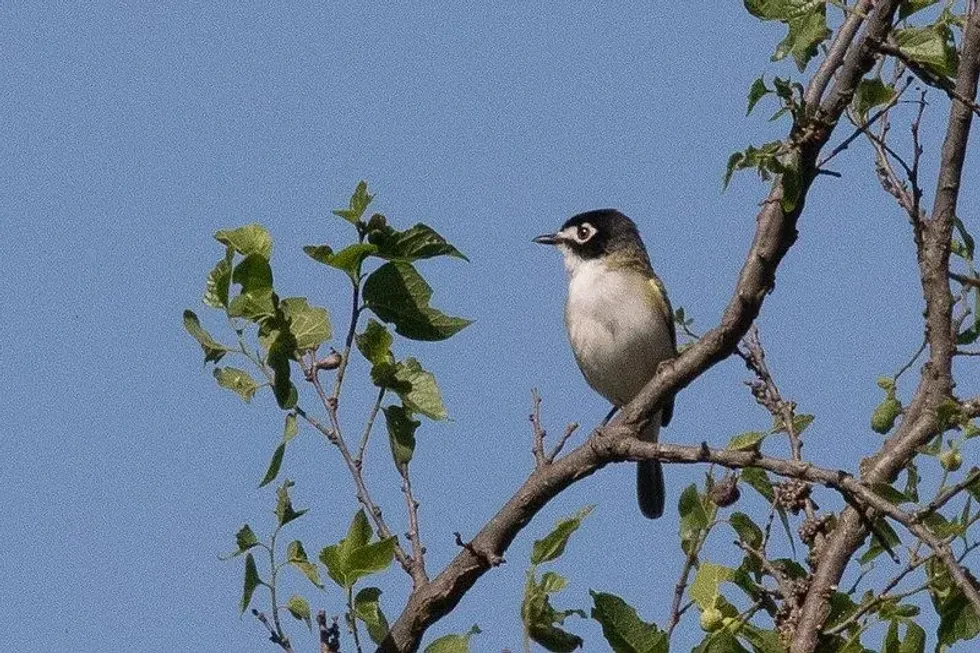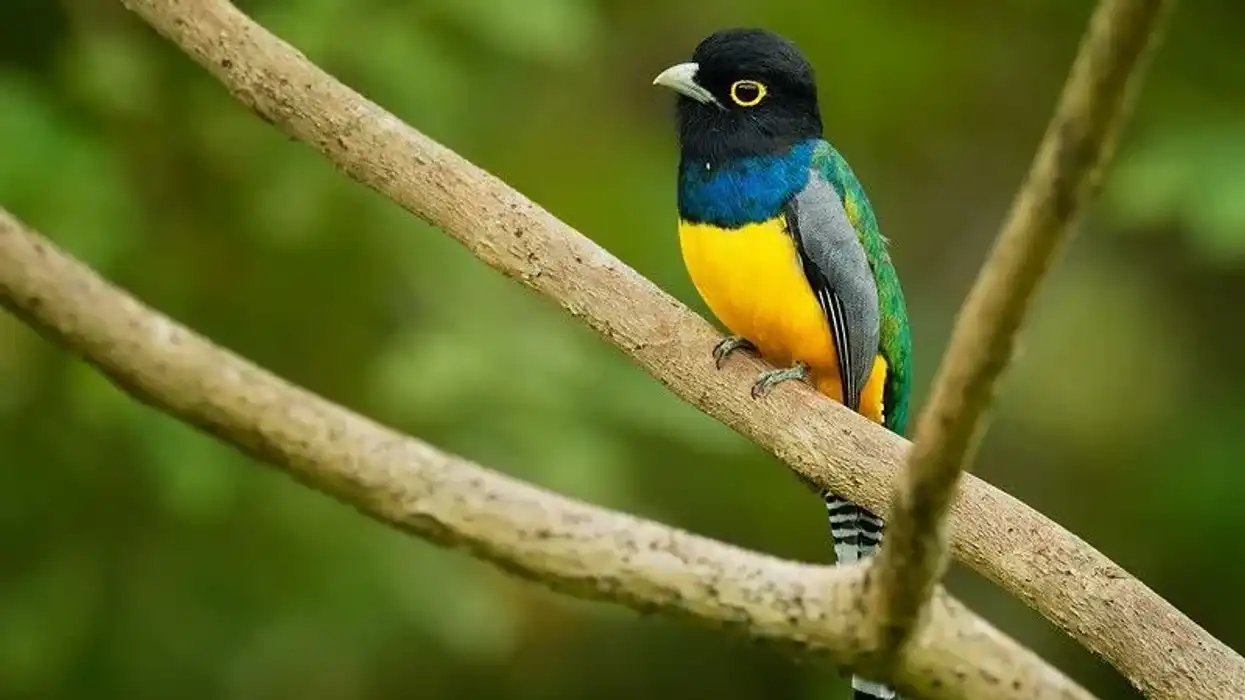A black-capped vireo, also known as Vireo atricapilla or brown-headed cowbird, is a rare songbird found in different parts of the United States and Mexico. Black-capped vireos are quite small in size and the average length of this bird is around 4-4.5 in (10-12 cm) and they weigh around 0.01 lbs (8.6 g).
An interesting feature of these birds is their loving nature. Both male and female black-capped vireos help each other during the process of nesting and incubation.
A female black-capped vireo lays around three to four eggs. Due to the major threats of human interference and loss of habitat, the International Union for Conservation of Nature has listed brown-headed cowbirds as Near Threatened.
Keep reading to learn more interesting facts about the black-capped vireo. If you want to know more exciting information about different animals, check out the fulvous whistling duck and flammulated owl facts too.
Black-Capped Vireo Interesting Facts
What type of animal is a black-capped vireo?
Black-capped vireos are small-sized birds. These birds are known for their beauty and skill of singing. They primarily prey on fruits, berries, caterpillars, beetles, small grasshoppers, and crickets, and are found in small trees and scrub woodlands.
What class of animal does a black-capped vireo belong to?
Black-capped vireos are birds that belong to the class of Aves, the family of Vireonidae, and are of the Vireo genus.
How many black-capped vireos are there in the world?
These birds are primarily found in North American countries such as the United States and the coast of Mexico. This species was listed as endangered by the U.S.
Fish and Wildlife Service as their numbers are declining drastically. A few years back, the estimated population was more than 10,000 and this species is closely monitored by several conservation departments such as the Oklahoma Department of Conservation and the Texas Parks and Wildlife Department.
Efforts are also being made by the U.S. army to protect these rare black-capped vireo birds.
Where does a black-capped vireo live?
Black-capped vireos are one of the major species of North American birds. They are commonly found in the U.S. and Mexico. These birds can easily be spotted in the regions of Edwards Plateau, Oklahoma, Texas, and Coahuila of Mexico.
What is a black-capped vireo's habitat?
These birds primarily live in dense areas and separated trees as they like sunlight. These areas are known as shinnies and consist generally of two types of trees, scrub oak, and sumac. A black-capped vireos nest is found in small trees, shrubs, and arid, and hilly regions.
Who do black-capped vireos live with?
Unlike blue-capped vireo birds, most black-capped vireos live with their families. Also in the breeding season, males come closer to female vireos. During the nesting stage, most males pair up with female birds in the process of constructing nests and incubation.
How long does a black-capped vireo live?
Unlike most garden birds, black-capped vireo birds live for a long time. The average life span of a black-capped vireo bird is five to six years.
How do they reproduce?
The breeding season of black-capped vireo birds starts from mid-April to August.
Black-capped vireos are monogamous which means these birds mate with only one partner at a time. A female bird lays around three to four eggs at a time and an interesting fact about these birds is that both male and female partners are involved in the nesting and incubation.
The incubation period lasts for around 15 to 17 days, and after the hatching of their eggs, yellowish or pink-colored young birds emerge and they generally leave the nest after 12 to 14 days.
What is their conservation status?
Black-capped vireo birds are quite rare and are known for their beauty and singing skills. These birds are found in North American countries such as the United States and Mexico.
The black-capped vireo bird has been listed as Near Threatened by the International Union for Conservation of Nature, and the species was listed as endangered by the U.S. Fish and Wildlife Service as their numbers are declining drastically.
A few years back, the estimated population was more than 10,000 and the species is closely monitored by several conservation departments such as the Oklahoma Department of Conservation, and the Texas Parks and Wildlife Department. Efforts are also being made by the U.S. army to protect these rare black-capped vireo birds.
Black-Capped Vireo Fun Facts
What do black-capped vireos look like?
Among all the species of vireo, the black crown of these vireos (Vireo atricapilla) makes them the most beautiful birds in North America. They can be distinguished from other vireos by their unique face pattern.
These birds have black-colored heads with white circles around their eyes and white necks. They have olive green wings with two white strikes on each wing.
Also, their underbelly is white with yellow undertones. Males can be seen with jet-black heads, while females and young ones are less brightly colored.
Also, males are found in olive green color, females are paler than males, and young birds are found in yellowish or pink colors. Females have a crown that is slate gray compared to males which have an olive green body and crown.

How cute are they?
The black-capped vireos are one of the most beautiful and adorable birds found in the North American continent. These birds are a major attraction for tourists in the United States and Mexico. They are comparatively smaller in size. These small birds also have such a soulful voice that attracts everyone.
How do they communicate?
Like other birds, the black-capped vireos follow the same methods of communication. They primarily use songs, call notes, and body language to communicate with each other.
During the breeding season, they exhibit courtship behaviors to try and attract each other such as through song. Also, by making different sounds and noises, they try to indicate food as well as danger from brown-headed cowbirds or any other bird.
How big is a black-capped vireo?
These songbirds are quite small compared to other North American birds. Both male and female black-capped vireos are the same size. They are 4-4.5 in (10-12 cm) long. These birds are twice the size of a hummingbird.
How fast can a black-capped vireo fly?
The exact speed of a black-capped vireo has not been recorded yet. Generally, after the hatching of eggs in their nests, young birds leave the nest after 12 to 14 days. Also, these birds don't fly unless they are migrating during the winter season.
How much does a black-capped vireo weigh?
The weight of male and female black-capped vireos is the same. A black-capped vireo weighs around 0.01 lbs (8.6 g).
What are the male and female names of the species?
There are no specific names given to male and female black vireos. People generally differentiate the birds by looking at their bodies.
What would you call a baby black-capped vireo?
No particular name is used to describe a baby black-capped vireo. People generally use chicks or young birds.
What do they eat?
These birds are omnivores and they primarily prey on fruits, berries, caterpillars, beetles, small grasshoppers, and crickets.
Are they dangerous?
This species of bird is not dangerous or vicious and they love being around themselves. They can become aggressive if someone threatens their nests or tries to provoke the bird.
Would they make a good pet?
If you want to start your day with a beautiful song, the black vireo bird (Vireo atricapilla) would be the best way. However, the population of black vireo birds is declining and one of the many reasons is because of keeping them in captivity as a pet.
Did you know...
Unlike the eggs of other birds, the egg of a black-capped vireo bird is spotless.
As well as being involved in the process of nesting, a male black-capped vireo bird brings 75% of the food to the nests too.
Black-capped vireos are migratory and move to the coast of northern Mexico during the winter season in search of a scrub oak habitat.
Where are black-capped vireos endemic?
Yes, black-capped vireos are rare and endangered birds. They are only found in the regions of Texas, the Edwards plateau in the United States, and the coast of northern Mexico.
Do black-capped vireos have red eyes?
Unlike blue-capped vireos, black-capped vireos have red eyes with thick white spectacles in color.
Here at Kidadl, we have carefully created lots of interesting family-friendly animal facts for everyone to discover! Learn more about some other birds including Jandaya parakeet or ostrich.
You can even occupy yourself at home by drawing one on our gray Vireo coloring pages.










